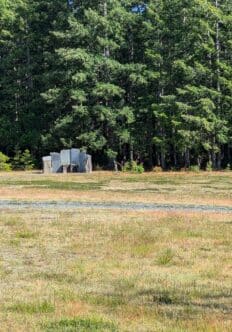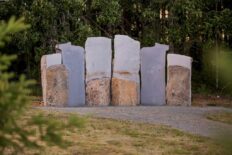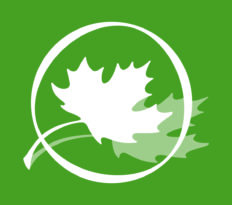Natural Burial at the Cumberland Cemetery
This page was last reviewed on September 22, 2025.
 Cumberland Cemetery is an historic cemetery, established in 1895, and the resting place of generations of Cumberlanders. Natural burial is not new at the cemetery. Grave vaults and liners have never been required, resulting in a rustic natural landscape that is rolling and dry, the ground covered with moss and kinnikinnick.
Cumberland Cemetery is an historic cemetery, established in 1895, and the resting place of generations of Cumberlanders. Natural burial is not new at the cemetery. Grave vaults and liners have never been required, resulting in a rustic natural landscape that is rolling and dry, the ground covered with moss and kinnikinnick.
The natural burial area was established in 2018 to provide a burial option for families that would impose the least possible environmental impact. Over time, the area has the potential to deliver a range of positive environmental benefits.
The natural burial area is a Green Burial Society of Canada certified site.
Principles of Natural Burial
The Green Burial Society of Canada has five principles of natural burial that are practiced at the cemetery:
- No embalming
- Direct earth burial
- Ecological restoration and conservation
- Communal memorialization
- Optimized land use
Find out more about these principles.
Natural Burial Features at the Cumberland Cemetery
Interment options at the Cumberland Cemetery include lots for one full burial and a second burial of cremated remains, and smaller lots near the tree line for two sets of cremated remains. Full burial can take place in casket or shroud made of biodegradable and environmentally sustainable materials. Cremation burials may be placed without a container or in a biodegradable container.
Interments take place sequentially and graves are assigned following the cemetery layout plan once a death has occurred. This allows the Village to plant native species of trees and plants as burials take place to optimize land use. Family and friends may participate in a graveside service through a funeral services provider or on their own.

Memorialization
Staying true to the principles of natural burial, simple memorialization will take place through optional engraving on a common monument of black tusk basalt. Placement of personal mementoes on graves is discouraged other than at the time of interment. 
Ecological Restoration
The long term goal for the natural burial area is to restore the natural habitat reflected the surrounding forest on the adjacent lands. Planting native species in new interment areas takes place in the fall to give the plantings the best chance of survival in the dry climate of the cemetery.
Plantings may include Douglas fir, white pine, huckleberry, Pacific dogwood, Douglas maple, flowering red currant, and creeping Oregon grape. Non-native plantings will be removed.
Natural Burial Fees
Fees for interment follow the general fee schedule for the Cumberland Cemetery. Additional fees for ecological restoration through natural landscaping at collected at the time of interment. Memorialization is optional and fees cover the cost of engraving, plus a contribution to the placement of the black tusk basalt memorial.
View the Natural Burial brochure.
Search again